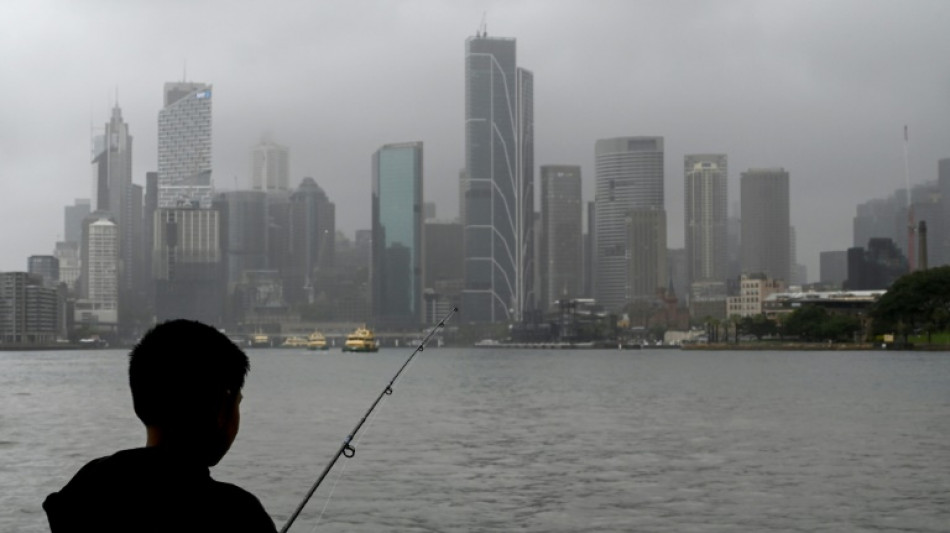
RIO
0.2100


Australia's most populous city Sydney smashed a 70-year annual rainfall record Thursday after a year marked by devastating east coast floods.
By early afternoon, Sydney had registered its highest annual rainfall total on record -- 2,216 millimetres -- with some 86 days still left until the end of the year.
Sydney's previous wettest year was 1950, when there were 2,194 millimetres of rain.
It was the highest figure recorded since annual rainfall data for the city of Sydney were first collected in 1858.
With a La Nina weather pattern forecast to bring a wetter-than-average summer, it is likely the final 2022 tally will be significantly higher.
Sydney, along with the broader state of New South Wales, is bracing for another heavy deluge this weekend.
State emergency services minister Steph Cooke said Thursday that more rain could have a severe impact.
"We know that our catchments are saturated, our dams are full, and our rivers are already swollen. So any additional rainfall, no matter how minor, is likely to exacerbate flooding circumstances," she said.
"Any additional rainfall has the potential to cause flash flooding."
The annual rainfall data comes from a weather station in Sydney's central business district.
Australia's Bureau of Meteorology said Thursday that flood warnings were in place for large sections of eastern Australia, including parts of Queensland, New South Wales, and northern Victoria.
- Extreme weather -
The east coast flooding catastrophe in March -- caused by heavy storms that devastated parts of Queensland and New South Wales -- claimed more than 20 lives.
Tens of thousands of Sydney residents were ordered to evacuate in July when floods again swamped suburbs on the city's fridge.
Australia has been at the sharp end of climate change, with droughts, deadly bushfires, bleaching events on the Great Barrier Reef and floods becoming more common and intense as global weather patterns change.
Australia's east coast has been repeatedly lashed by heavy rainfall in the past two years, driven by back-to-back La Nina cycles.
A rare third consecutive La Nina was recently declared, prompting further rain and flood warnings for the coming summer.
Higher temperatures mean the atmosphere holds more moisture, unleashing more rain.
Australia's Insurance Council has previously estimated more than Aus$5 billion ($3.2 billion) worth of catastrophe claims were made in 2022.
Catastrophic bushfires swept through huge chunks of New South Wales in the "Black Summer" of 2019 and 2020, scorching 5.5 million hectares -- about seven percent of the state's total landmass.
O.Yip--ThChM